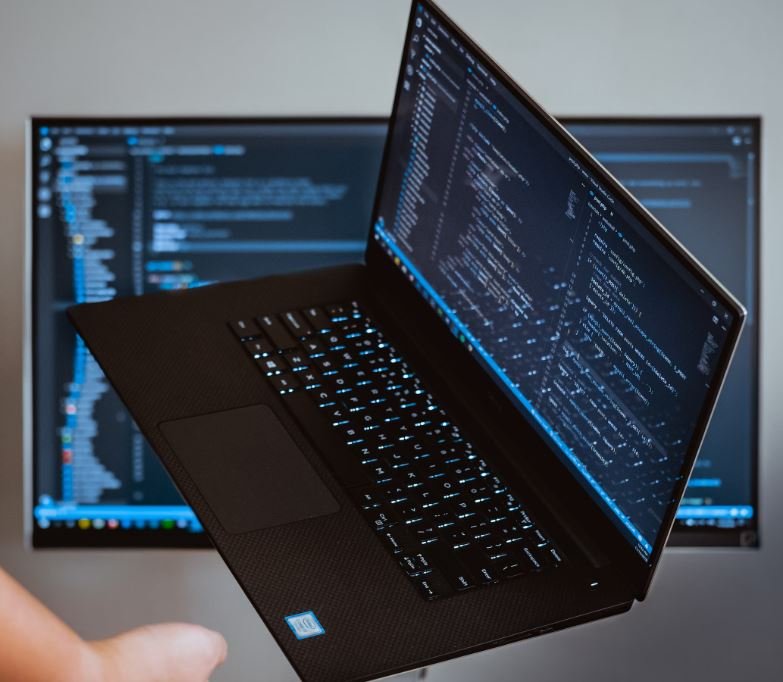If you’ve ever dealt with computer storage, you may have come across the terms **GPT** and **MBR**. These are two different partitioning schemes used on storage devices, such as hard drives and solid-state drives. Understanding GPT and MBR is essential for managing your storage effectively and ensuring compatibility between different systems. In this article, we will explore the key differences between GPT and MBR, their advantages and limitations, and when to choose one over the other.
## Key Takeaways
1. **GPT** (GUID Partition Table) and **MBR** (Master Boot Record) are two commonly used partitioning schemes.
2. GPT supports up to 128 partitions, while MBR can only handle up to 4 primary partitions.
3. GPT allows for larger partition sizes and provides more robust data redundancy through backup partition tables.
4. MBR is more compatible with older systems and certain operating systems, such as Windows XP.
5. To choose between GPT and MBR, consider the operating system compatibility, storage size, and the number of partitions required.
## GPT: Guid Partition Table
**GPT** is a newer partitioning scheme that provides several advantages over MBR. It uses a globally unique identifier (GUID) to identify partitions on the storage device. Unlike MBR, GPT can support a maximum of 128 partitions and offers more flexibility in terms of partition sizes.
*Interesting fact: GPT was introduced as part of the Unified Extensible Firmware Interface (UEFI) standard, which replaced the traditional BIOS.*
GPT also includes a backup partition table at the end of the storage device, ensuring data redundancy and increased reliability in case of partition table corruption. This redundancy makes GPT more reliable for critical systems or storage devices that require high data integrity.
### Advantages of GPT
– Support for large partition sizes (up to 18.4 million terabytes)
– More robust data redundancy through backup partition tables
– Compatibility with modern systems and UEFI-based firmware
– Protection against errors and corruption inherent to MBR
### Limitations of GPT
– Limited compatibility with older systems and some older versions of operating systems (e.g., Windows XP 32-bit)
– Potential issues when dual-booting with an older MBR-based system
## MBR: Master Boot Record
**MBR** is an older partitioning scheme that was commonly used in traditional BIOS-based systems. It stores the partition table information in the first sector of the storage device, called the Master Boot Record. MBR can handle a maximum of 4 primary partitions or 3 primary partitions and 1 extended partition.
*Interesting fact: +If the MBR becomes corrupted, it can lead to booting issues and potential data loss.*
MBR is still widely used today, particularly on older systems or for certain operating systems that do not support GPT. Due to its simplicity and compatibility, MBR is often the go-to choice when dealing with smaller storage devices or when working with legacy systems.
### Advantages of MBR
– Compatibility with older systems and operating systems
– Simplicity in implementation
– Less storage space required for the partition table
### Limitations of MBR
– Can only handle a maximum of 4 primary partitions or 3 primary partitions and 1 extended partition
– Limited support for larger partition sizes
– Prone to the risk of corruption and booting issues
## Choosing Between GPT and MBR
Deciding whether to use GPT or MBR depends on several factors. Consider the following points when making your decision:
1. **Operating System Compatibility**: Check if the operating system you intend to use supports GPT or MBR. Some older operating systems, such as Windows XP, may require MBR for compatibility reasons.
2. **Storage Size**: If you’re working with storage devices that exceed 2 terabytes, GPT is the only choice as MBR does not support larger sizes.
3. **Number of Partitions**: GPT allows for more partitions than MBR. If you require more than 4 partitions or want to create multiple logical volumes, GPT is the way to go.
4. **Compatibility with Legacy Systems**: If you plan to use the storage device with an older system or specific hardware that only supports MBR, then it’s best to choose MBR.
Making an informed decision based on these factors will ensure your storage device is compatible and works seamlessly with your chosen operating system.
## Comparison of GPT and MBR
### **Table 1: GPT vs. MBR**
| Features | GPT | MBR |
|———-|—–|—–|
| Maximum Number of Partitions | 128 | 4 (or 3 primary + 1 extended) |
| Maximum Partition Size | 18.4 million TB | 2 TB (2.2 TB with Advanced Format) |
| Data Redundancy | Yes (backup partition table) | No |
| Compatibility with UEFI | Yes | No |
| Compatibility with Legacy Systems | No (limited) | Yes |
| Required Disk Space for Partition Table | 34 sectors | 1 sector |
**Table 1** provides an overview of the key differences between GPT and MBR, summarizing the maximum number of partitions, maximum partition size, data redundancy, compatibility with UEFI and legacy systems, and the disk space required for the partition table.
### **Table 2: Operating System Compatibility**
| Operating System | GPT Support | MBR Support |
|——————|————-|————-|
| Windows 10/8/7 (64-bit) | Yes | Yes |
| Windows 10/8/7 (32-bit) | Yes | Yes |
| Windows XP (32-bit) | Yes | Yes |
| macOS 10.6.3+ | Yes | Yes |
| Linux (most distributions) | Yes | Yes |
| MS-DOS | No | Yes |
**Table 2** shows the operating system compatibility for both GPT and MBR. Note that both partitioning schemes are widely supported by modern operating systems.
### **Table 3: Partition Style Comparison**
| Factors to Consider | GPT | MBR |
|———————|—–|—–|
| Maximum Partition Size | Larger Sizes Supported | Limited to 2 TB |
| Maximum Number of Partitions | Up to 128 | Up to 4 (or 3 primary + 1 extended) |
| Data Redundancy | Yes | No |
| Compatibility with Legacy Systems | Limited | Yes |
| Operating System Compatibility | Wide Range | Wide Range |
**Table 3** provides a concise comparison of various factors to consider when deciding between GPT and MBR, including the maximum partition size, number of partitions allowed, data redundancy, compatibility with legacy systems, and operating system compatibility.
By understanding the differences between GPT and MBR and evaluating your specific requirements, you can make an informed decision when choosing the appropriate partitioning scheme for your storage devices.
Now that you have a clear understanding of GPT and MBR, you can confidently choose the partitioning scheme that best suits your needs and ensure optimal compatibility and performance for your storage devices.

Common Misconceptions
1. GPT (GUID Partition Table) vs MBR (Master Boot Record)
There is often confusion surrounding the differences between GPT and MBR partitioning schemes. One common misconception is that GPT is superior to MBR in every scenario. However, it is important to note that the choice between GPT and MBR depends on the specific use case.
- GPT provides support for larger disk capacities compared to MBR.
- MBR is more compatible with older operating systems, while GPT is generally recommended for newer systems.
- GPT allows for redundancy by maintaining backup partition tables, while MBR does not.
2. GPT Requires UEFI (Unified Extensible Firmware Interface)
Another common misconception is that GPT can only be used with UEFI firmware. While it is true that UEFI is compatible with GPT, it is important to note that GPT can also be used with the older BIOS (Basic Input/Output System) firmware.
- UEFI firmware provides faster boot times compared to BIOS.
- BIOS firmware is more widely supported and compatible with older hardware.
- UEFI allows for a more secure boot process with the use of signed boot loaders.
3. GPT and MBR Are Interchangeable
Some people mistakenly believe that GPT and MBR can be easily switched without consequences. However, converting between GPT and MBR partitioning schemes is not a straightforward process and requires careful consideration.
- Converting from GPT to MBR may result in data loss.
- Some operating systems may not function properly after converting to a different partitioning scheme.
- It is recommended to backup important data before attempting to convert between GPT and MBR.
4. MBR Can Only Have Four Primary Partitions
Another common misconception is that MBR can only have a maximum of four primary partitions. While it is true that MBR has a limit of four primary partitions, there are workarounds to create more partitions by using extended and logical partitions.
- Extended partitions act as containers for logical partitions within the MBR scheme.
- Multiple logical partitions can exist within a single extended partition.
- Using extended and logical partitions allows for creating more than four partitions in the MBR scheme.
5. GPT Is Only Beneficial for Large Capacity Drives
Some people believe that GPT is only beneficial for large capacity drives and provides no advantages over MBR for smaller drives. However, GPT offers various advantages that are not solely dependent on drive capacity.
- GPT provides more robust partitioning compared to MBR, allowing for easier data recovery in case of partition corruption.
- GPT supports up to 128 partitions per disk, providing more flexibility for partitioning schemes regardless of drive size.
- GPT offers better support for modern technologies, such as secure boot and larger sector sizes.

Introduction
This article explores the differences between GPT (GUID Partition Table) and MBR (Master Boot Record) in computer systems. GPT and MBR are two different partitioning schemes used to manage disk partitions. They have distinct characteristics, advantages, and limitations. The following tables provide further insights and data to enhance your understanding of these topics.
Advantages of GPT over MBR
Below are some advantages of using GPT over MBR:
| Advantage | Description |
|---|---|
| Supports larger disk sizes | GPT can handle disks greater than 2TB, while MBR has a limit of 2TB. |
| Better data redundancy | GPT stores multiple copies of important data structures, reducing the risk of corruption and improving reliability. |
| Supports more partitions | GPT allows up to 128 primary partitions, while MBR limits to 4 primary partitions. |
Advantages of MBR over GPT
Here are some advantages of using MBR over GPT:
| Advantage | Description |
|---|---|
| Wide compatibility | MBR is supported by more operating systems and older hardware. |
| Faster boot times on legacy systems | Since MBR has a simpler structure, it can be accessed and read by the system more quickly. |
| Flexibility in mixed partitions | MBR allows for a combination of primary and extended partitions, offering more flexibility in disk partitioning. |
GPT Partition Type Identifiers
GPT uses unique partition type identifiers to specify the purpose of each partition:
| Type | Description |
|---|---|
| EFI System Partition (ESP) | This partition is used by the firmware for booting operating systems and storing system files. |
| Microsoft Reserved Partition (MSR) | MSR is a reserved partition for Microsoft’s internal use. It doesn’t contain user data. |
| Basic Data Partition | Used for storing user files, such as documents, media, and applications. |
MBR Partition Types
MBR uses partition type codes to define the purpose of each partition:
| Type | Description |
|---|---|
| Primary Partition | This type indicates a primary partition that can be bootable and contains an operating system. |
| Extended Partition | Extended partitions are used to create logical partitions within, allowing for more than four partitions in total. |
| Logical Partition | Logical partitions reside within extended partitions and are used to organize and store user data. |
GPT Header Structure
The GPT header contains crucial information for the disk and partitions:
| Field | Description |
|---|---|
| Signature | A unique identifier representing the GPT structure. |
| Revision | The version or revision number of the GPT standard being used. |
| Header Size | The size of the GPT header in bytes. |
MBR Structure
The MBR structure consists of the following elements:
| Field | Description |
|---|---|
| Boot Code | A small program executed during system startup. |
| Partition Table | A table containing information about the partitions on the disk. |
| MBR Signature | A 2-byte value indicating the presence of an MBR. |
GPT and MBR Compatibility
GPT and MBR can coexist on the same disk, but compatibility varies:
| Compatibility | Description |
|---|---|
| Legacy BIOS | Legacy BIOS systems cannot boot directly from GPT disks. |
| UEFI | UEFI firmware supports booting from both GPT and MBR disks. |
Usage in Operating Systems
Here’s a summary of GPT and MBR usage in various operating systems:
| Operating System | GPT Support | MBR Support |
|---|---|---|
| Windows 10 | ✅ | ✅ |
| macOS | ✅ | ❌ (Limited) |
| Linux | ✅ | ✅ |
Conclusion
In conclusion, understanding the differences between GPT and MBR partitioning schemes is essential for managing disk partitions effectively. GPT offers advantages such as support for larger disks and improved data redundancy, while MBR provides compatibility with legacy systems and faster boot times. Both GPT and MBR have their merits and are widely supported by modern operating systems. Selecting the appropriate partitioning scheme depends on your specific requirements and system compatibility.
Frequently Asked Questions
What is GPT?
What does GPT stand for?
How does GPT work?
What is MBR?
What is MBR in computer systems?
Why is MBR significant?
GPT and MBR
How are GPT and MBR related?
Benefits and Limitations
What are the benefits of using GPT?
What are the limitations of GPT?
Applications and Future Developments
What are the potential applications of GPT?
What future developments can we expect for GPT?




